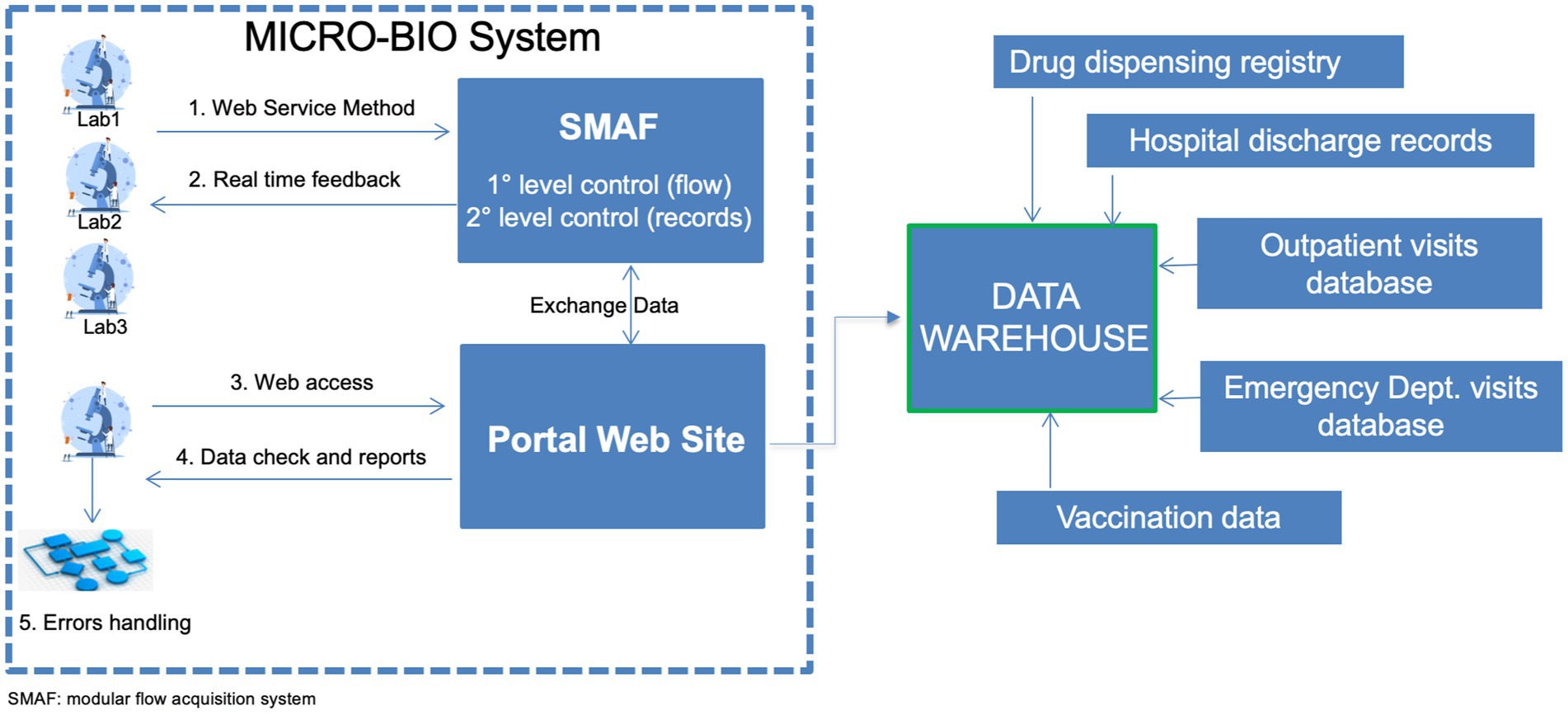💡 Antimicrobial resistance (AMR) poses a substantial threat to public health globally, and Italy has faced challenges in combating its rise. The MICRO-BIO project, initiated in Lombardy as part of the National Plan to Combat Antibiotic Resistance, was launched in 2018 to establish a comprehensive surveillance tool. Despite disruptions from COVID-19, the project successfully integrated 30 out of 33 laboratories in the Lombardy Region, collecting 1,201,000 microbiological data in the first nine months of 2023.
📍 Goals and Challenges: The paper outlines the goals and challenges of the AMR surveillance tool, emphasizing the crucial role of such systems in combating antimicrobial resistance. The MICRO-BIO project aims to inform regional and local AMR epidemiology, offering meaningful contributions to local healthcare practices and interventions.
📌 Stakeholder Involvement and Regional Coverage: MICRO-BIO involves various stakeholders, including microbiology labs, local health authorities, and hospital leaders. The standardized integration model, implemented by private healthcare software companies, facilitated the inclusion of small laboratories, increasing regional coverage. The project demonstrated its usefulness in producing both quantitative and qualitative indicators of blood culture collection.
📍 Key Scientific Findings:
📌 Project Initiation and Goals: MICRO-BIO is part of Lombardy’s National Plan to Combat Antibiotic Resistance, aiming to create a surveillance tool integrating bacterial isolates’ data from microbiology laboratories. Launched in 2018, it focuses on AMR surveillance through multidisciplinary collaboration in public health and information technology (IT).
📌 Laboratory Integration and Data Collection: Despite disruptions due to COVID-19, 30 out of 33 laboratories were integrated into MICRO-BIO by October 2023. Over 1.2 million microbiological data were collected in the first nine months of 2023. Blood culture results from 20 labs in 2022 provided valuable insights into AMR profiles at regional and single-hospital levels.
📌 Significance for Local Healthcare Facilities: MICRO-BIO benefits microbiology labs, local health authorities, and hospitals by informing antibiotic prescribing guidelines and supporting infection prevention and control (IPC) initiatives. It allows analysis of data to prioritize pathogens, create internal guidelines, and monitor adherence to regional and national objectives.
📍 Challenges and Limitations: The COVID-19 pandemic caused delays but also emphasized the importance of coordinated activities in health crises.
Challenges include the absence of standardized vocabulary for microbiology results and the lack of an automatic system to detect errors.
📍 Expansion and Collaboration: MICRO-BIO is expanding to include private laboratories and collaborates with WHONET to implement an alert system for outbreak identification. The project has the potential to link with other regional databases, such as drug dispensing registries, for comprehensive data analysis.
📍 Potential Applications: The tool can assist in monitoring hospital-acquired infections (HAI) by merging databases, facilitating resource allocation, and measuring intervention efficacy. MICRO-BIO’s One Health approach allows integration of veterinary and environmental data, addressing AMR spread across different settings.
📍 Model for National Implementation: MICRO-BIO’s success in Lombardy suggests it can serve as a model for other regions in Italy, facilitating a systematic data flow for national analysis and comparison. The potential outcome is a unified model among Italian regions for efficient AMR surveillance and resource allocation.
📌 In conclusion, the MICRO-BIO project represents a pioneering effort in Lombardy to combat AMR through effective surveillance. Its potential applications, collaborative efforts, and adaptability make it a valuable model for addressing AMR challenges not only locally but also at the national level. Regular measurement of its achievements is critical for ongoing improvement and adaptation to evolving epidemiological scenarios.
Link to the article : http://tinyurl.com/59aha9bp
